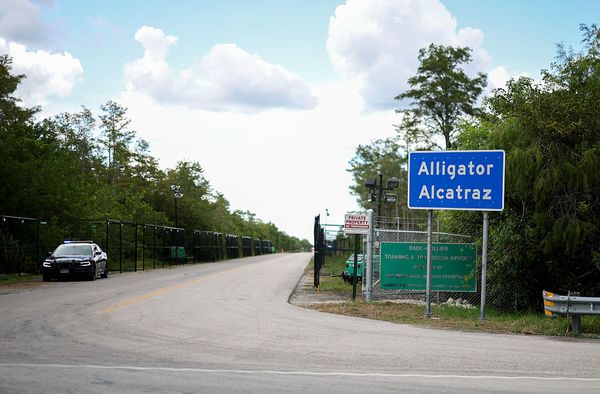
For the biggest Tesla boosters, the most prominent counter-argument to sagging sales worldwide has been "Just wait." Specifically, wait for the new Tesla Model Y to hit the road.
It's the world's best-selling electric vehicle, the best-selling car by some metrics, and Tesla's most important vehicle, bar none. So the going theory has been that many fans were simply waiting for that car to arrive, and then Tesla sales would see a long-awaited revival. But new sales data suggests that isn't the case. And it doesn't bode well for Tesla's ability to deliver the future it has promised.
That kicks off today's edition of Critical Materials, our morning roundup of industry and technology news. Also on deck today: Rivian weighs its own tariff impacts, and the BBC has a revealing look at what's next for EV battery swapping. Let's dig in.
30%: New Tesla Model Y Fails To Revive Tesla's Fortunes In Europe

I've been saying this for months: if the updated "Juniper" Model Y isn't a hit, we're going to know for sure that Tesla is in crisis.
If that happens, it's not the car's fault. Not entirely, anyway. Most reviews have been overwhelmingly positive, calling it a needed and convincing update that smooths out most of the rough edges of the world's EV standard-bearer. If it's guilty of anything, it's being more of a heavy update than a truly new car from Tesla, but it's still a solid EV.
Instead, the problem here seems to be the global backlash against Tesla CEO Elon Musk. It's DOGE-related here in America, and in opposition to his support of far-right politics in Europe. As we reported on Monday, Tesla's European sales have been increasingly abysmal as the year goes on. But I wanted to take a moment to look at the impact of the Model Y, specifically.
Here's what Bloomberg has to say:
Tesla saw steep declines in eight of Europe’s 10 largest EV markets even as it started shipping the redesigned Model Y sport utility vehicle to customers. Changing over production lines at assembly plants around the globe—including in Germany—cost the company several weeks of output early this year and contributed to the company’s worst quarterly sales since 2022.
The UK was a rare exception for Tesla in the first quarter, with the company seeing a 6% increase in registrations. But while Tesla managed to grow, it lagged well behind the 43% jump in industrywide sales of battery-electric vehicles.
While the Model Y topped the sales charts in Norway last month, the nation’s road federation noted in its monthly statement that Tesla’s overall sales are “nowhere near the level we are used to.”
“It may be a sign that many people now find that other brands are just as interesting and have just as much to offer in roughly the same price segment,” said Oyvind Solberg Thorsen, director of the Norwegian Road Federation.
Indeed, production of the Model Y is still ramping up. But it doesn't seem to be taking off as expected. Here in America, it's already being offered with 1.99% financing—super-low in our current interest-rate environment—and that doesn't feel like a great sign.
Tesla may be staking its future on robotaxis and autonomous driving, but for now, it needs to sell cars to pay the bills. I'm eager to see the U.S. delivery numbers once the second quarter draws to a close.
60%: Rivian Warns Of Tariff Impact Even As It Posts Profitable Quarter

On the whole, Rivian had good news in its first-quarter earnings call last night. It's getting even more money from new software partner Volkswagen, CEO RJ Scaringe doesn't think that the R2 will see a price increase, and the company achieved its second quarter in a row of positive gross profits.
But even a vertically integrated, American-built company like Rivian is bracing for a tariff impact. Parts are going to get more expensive and a more uncertain macroeconomy will almost certainly mean fewer car sales. Here's Yahoo Finance's Pras Subramanian with some analysis:
But the company said "evolving trade regulation, policies, tariffs," as well as the impact on consumer sentiment and demand have led Rivian to cut its 2025 delivery outlook to 40,000 to 46,000 units (from 46,000 to 51,000) and raise its capital expenditures guidance to $1.8 billion-$1.9 billion from a prior $1.6 billion-$1.8 billion.
The company did maintain its 2025 full-year adjusted EBITDA loss projection in the range of $1.7 billion to $1.9 billion.
"While Rivian has 100% U.S. vehicle manufacturing and a majority of its bill of materials (excluding cells) coming from the US or [United States-Mexico-Canada Agreement] USMCA-qualified, Rivian is not immune to the impacts of the global trade and economic environment," the company said.
The automaker still lists a $6.6 billion loan on its balance sheet, as that story notes, but the deal is under scrutiny by the White House and DOGE. Still, Rivian may just have the juice to get through a transitional year, as long as it can keep the R2 on track.
90%: China's EV Battery Swaps Could Make Big Waves In Other Countries

While in China, I got to try Nio's battery-swapping technology for myself. It is extremely impressive. You pull into the markings painted on the ground, and when the car detects where it is, you hit a "start" button on the infotainment screen and the EV does the rest. It even backs into the station autonomously. The rest is like being in a car wash, except you get a fully charged new battery at the end of it.
While I'm not convinced it's a be-all, end-all alternative to charging—though some Nio employees told me they only do battery swapping with their personal cars now—I think it's a great option to have available.
But the BBC reports that battery swapping may have even more potential in developing markets that are just now beginning to electrify:
Battery swapping can have some big advantages, in particular the lower amount of time it takes compared to recharging a battery while its inside a car. Still, it faces obstacles in China, which is also developing fast charging infrastructure at breakneck speed.
In fact, experts say that it may be in the countries which, unlike China, remain in the early stage of a switch to EVs that battery swaps prove most useful for supporting electric car uptake – especially when it comes to addressing range anxiety among drivers.
[...] Battery swaps are already being explored outside China. India and several other South East Asian countries are developing battery swap technology for scooters and motorbikes, and in 2022 India announced a new battery swap policy to promote the sales of electric cars. In 2023, Taiwan-based battery swap company Gogoro announced a $2.5bn (£1.9bn) partnership with the Indian state of Maharashtra and local supplier Belrise to build smart battery-swapping and energy infrastructure.
Kenya similarly announced a partnership with electric vehicle and battery swap company Spiro in 2023. Meanwhile, after trials with Uber in San Francisco in 2021, California battery-swapping start-up Ample now has partnerships to integrate its swap station technology with Netherlands-based carmaker Stellantis and Tokyo's EV infrastructure.
It's a great solution, even in places like Japan, a lower-voltage country that can often struggle with energy production. But as that story notes, battery swapping has its pitfalls too, including similar problems to EV charging, like long lines:
Battery swaps inherently require car owners to relinquish ownership of a particular battery. If a car owner has just bought a new car and swaps its battery on the motorway, for example, they will very likely receive an older battery. Many car companies are aware of this issue, and some have adopted a business model of separating the car and the battery: consumers buy their cars without batteries, which they rent directly from the company.
And while battery swaps would appear to solve range anxiety, it currently isn't always the case. A Nio owner I meet at the battery swap station near the Beijing Olympic Sports Centre tells me that while the time to swap the battery itself is indeed very fast, the swap stations need to reliably have a fully charged battery and few people in line to avoid long wait times. Once, he says, when visiting the suburbs, he almost missed an important meeting back in the city because no fully charged batteries were available.
The BBC did a great job with that story. I recommend a read in full.
100%: Do You See Model Y Sales Picking Up This Year?

The Elon Tax is getting pretty expensive. Then again, 1.99% financing is seriously not bad, even in this economy.
But Tesla has problems like that on multiple fronts. In China, the brand is just kind of played out. This isn't terribly scientific, but after a week and a half in Shanghai, Hangzhou and Beijing, I only ever saw about a half-dozen Juniper Model Ys on the road. I expected a lot more than that.
Do you see the Model Y rebounding this year? Let us know in the comments.
Contact the author: patrick.george@insideevs.com







